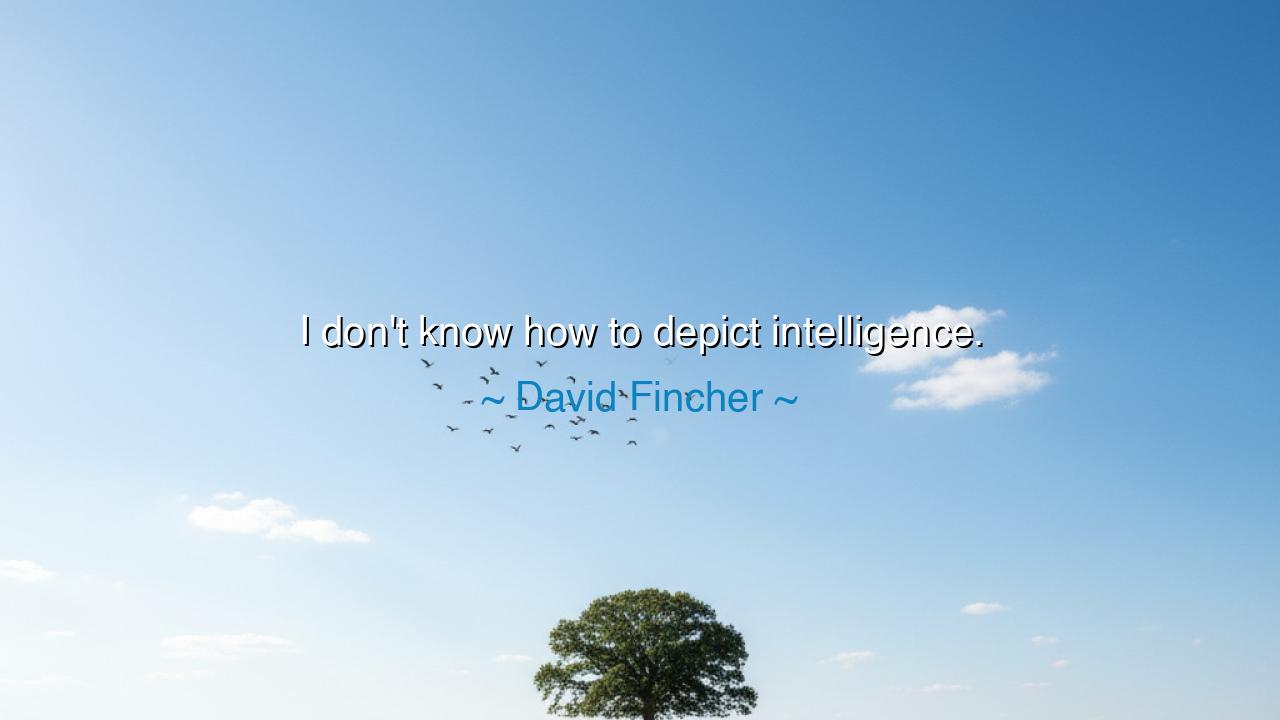
I don't know how to depict intelligence.






In the quiet chambers of reflection, David Fincher once confessed, “I don’t know how to depict intelligence.” These words, though few, are like the sound of a temple bell echoing across centuries — simple, yet infinite in meaning. What does it mean, this inability to “depict” what so many yearn to understand and portray? Intelligence is not a shape, nor a color, nor even a movement. It is a whisper behind the eyes, a hidden current beneath calm waters. To depict it is to try to capture the wind — seen only by what it moves, never by what it is.
In this confession lies not weakness, but wisdom. Fincher, a master of visual storytelling, understood that intelligence cannot be worn like a crown. It does not shine in grand gestures or loud proclamations. True intelligence hides in subtlety — in pauses, in choices, in the things left unsaid. The artist, in seeking to capture it, must confront the paradox of all art: that what is most real is often what cannot be shown. In this struggle, Fincher revealed the humility of a creator before the mystery of the human soul.
Consider the story of Socrates, the wisest of Athens, who declared that he knew nothing. The world, dazzled by philosophers and sophists, sought wisdom in elaborate speech, yet Socrates claimed ignorance — and in that act, embodied the truest intelligence of all. Like Fincher, he understood that intelligence resists performance. It cannot be feigned or illustrated in mere posture or speech; it must be lived, questioned, and pursued endlessly. The wisest man of his age and the most meticulous filmmaker of ours both bowed before the same truth: that wisdom is not in showing, but in seeking.
There is something profoundly human in this admission. When Fincher says he does not know how to depict intelligence, he speaks for every artist, teacher, and thinker who has ever tried to illuminate what lives in the unseen corners of the mind. To depict intelligence is to wrestle with the invisible — to make the abstract visible, to turn silence into sound, thought into image. And perhaps it cannot be done perfectly, for intelligence is not a thing to be displayed, but a presence to be felt — through action, through patience, through the deep integrity of how one lives.
Yet, Fincher’s statement is not a surrender, but a challenge. It calls upon us to look beyond appearances, to train our eyes not on what is shown, but on what guides the showing. A quiet person may contain oceans of understanding; a loud one may echo only their emptiness. The wise learn to listen for the pulse of intelligence in humility, in curiosity, in restraint. They see that it moves not in the glare of attention, but in the steady light of purpose.
From this, let every seeker learn: Do not try to appear intelligent — strive to be wise. The performance of intellect is a shallow flame, bright for a moment, then gone. But true understanding is the ember that endures, glowing softly through time. To cultivate it, one must read deeply, question boldly, and above all, remain teachable. For intelligence, like a river, grows only by what it receives.
So let Fincher’s words guide you, as the ancients were guided by stars they could not touch. When you face the limits of your own understanding, do not despair. That recognition — that honest humility — is where true intelligence begins. Let your life itself become the art that “depicts” it: not through spectacle, but through sincerity, through thought, through the beauty of continual becoming. In this way, though you may never depict intelligence, you may one day embody it, and that is the noblest depiction of all.






AAdministratorAdministrator
Welcome, honored guests. Please leave a comment, we will respond soon